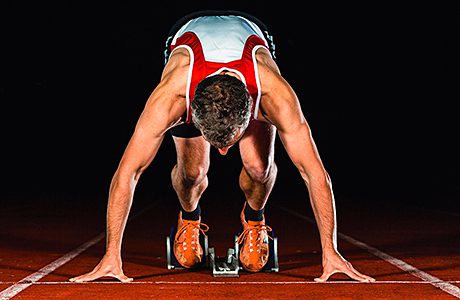
ENERGY drinks, including functional or stimulant drinks and glucose-based drinks, have been the star performers in the soft drinks market for many years.
That’s been especially true in terms of revenue and profit in convenience outlets, where the drinks have overtaken colas in value sales though not in volumes sold. Sports drinks, while not sustaining such a positive performance, nevertheless make a very substantial contribution to sales.
But what do consumers actually use them for, where do they consume the drinks and what can those behaviours tell us about the market now and in the future?
There are signs that impulse stores, including independent and symbol c-stores, are seeing growth in sales of energy drinks fall behind the rates now being achieved in supermarkets. If that’s true are there reasons that can be identified?
Well, global marketing research giant Mintel last month released its latest analysis of the UK energy and sports drinks market and it found out that in many cases energy drinks are indeed being used functionally by consumers.
Put bluntly, the Great British public is shattered.
The latest Mintel research reveals that more than half (54%) of Brits say they often feel tired, rising to six in 10 (60%) of women.
And the analyst reckons that’s showing through in sales from soft drinks chillers and shelves.
Throughout the economic downturn, it notes, the sports and energy drinks market saw steady growth rising from a value of £1bn in 2009 to an estimated £1.5 billion in 2014.
Consumer thoughts on their tiredness are actually quite detailed and considered. It’s not just that they want to avoid feeling energy-depleted. They want, especially, to avoid what they see as going along with that.
According to Mintel, some three quarters of Britons say they are “more fun to be around” when they’re feeling energetic (and 82% of women see things that way) and 64% of all folks and 75% of women say they get irritated easily when they’re tired.
Some, at least, appear to use energy drinks to counter the effects of tiredness. Though interestingly (unlike sports drinks consumers) they’re not in a majority.
Mintel defines energy drinks as “drinks that specifically claim to provide an energy or stimulant boost, supporting mental alertness and/or physical performance”. They generally include active ingredients such as glucose, caffeine or taurine, and may include other ingredients positioned as beneficial to health, such as ginseng and various vitamins and minerals.
It defines sports drinks as drinks that “claim to improve sporting performance or to speed up recovery”. Such drinks are often labelled isotonic/hypotonic and are claimed to rehydrate and replenish nutrients after exercise.
Mintel found that only 49% of people had drunk an energy drink in the preceding year. That suggests that while growth in sales of energy drinks has been impressive there’s plenty of room for further sales increases if the rest of the population can be brought into the market.
On the other hand some 61% of British consumers had drunk a sports drink in the preceding year.
However, despite that relatively high market penetration, sales of sports drink are declining – with sales down from 173m litres in 2011 to a predicted 156m litres in 2014, which, the research firm reckons, will mean a fall in value of 15% from £236m to £218m over the same period.
It says sales of energy drinks have risen from 454m litres to an estimated 550m litres between 2011 and 2014, with value sales up from £1bn in 2011 to a predicted £1.3bn this year. It says sales of energy drinks are expected to rise to 647m litres in 2019.
David Zhang, research analyst at Mintel, said: “The growth of the sports and energy drinks market has slowed down dramatically over the past couple of years since peaking in 2011, due to the ailing sports drink market.
“The decline in sales of sports drinks at a time when sports participation is rising highlights that consumers are opting for other sources of hydration when undertaking sports. With strong overlap between users of sports and energy drinks, cross-category competition between the segments looks likely to remain intense.”
The Mintel research suggests there’s strong consumer demand for sports and energy drinks that provide a natural high. But when it comes to energy drinks, over three-quarters (77%) of consumers would like clearer information on what the different ingredients in the energy drinks do and 43% would be interested in trying energy drinks made with all natural-ingredients in the future.
Some 72% would like clearer information on what each ingredients in sport drinks do and 44% would be interested in trying sport drinks made with all-natural ingredients.
And there appears to be significant demand for other information.
Some 69% of the public say it’s hard to know how much energy drink it is safe to drink per day and 62% agree it would be a good thing for stores to impose an age limit on the purchase of energy drinks. More than two-thirds (68%) of respondents think it’s hard to tell if sports drinks actually work and 21% reckon the drinks are beneficial to athletes only.
“The high proportion of consumers wanting to understand how energy drink ingredients work offers a way for brands to differentiate themselves in the market by highlighting the ingredients used,” Zhang said.
“Also, as functional claims are highly regulated, this interest suggests scope for brands to move the focus onto the various ingredients or the unique formula of their drinks in their marketing campaigns.”
The Britvic Soft Drinks Review published earlier this year showed that while functional and energy drinks had traditionally been one of the great c-store success stores with sales and growth ahead of those in the giant multiple grocers’ outlets, times have changed. The giants had caught up and now growth is greater through those stores, the review said.
And the more recently released Mintel report might give at least one of the reasons why that is the case.
Despite the ‘on-the-go’ positioning of energy and sports drinks, Mintel’s research suggests sports and energy drinks are mostly consumed in the home with 55% of Brits who drink sports drinks and 47% of those who drink energy drinks consuming them there.
In contrast, just 24% of those who drink sports drinks and 26% of those who drink energy drinks consume them at the gym.


















